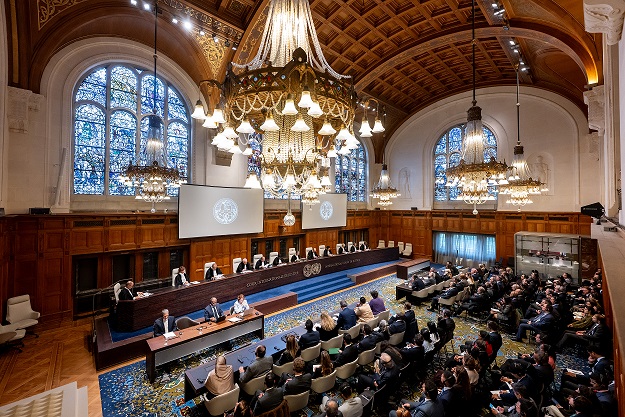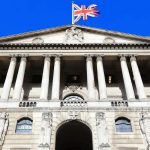In addition to that thorny problem, a number of factors are combining this month to make the outcome more difficult than usual to guess…reports Asian Lite News
The Bank of England (BoE) is expected to cut its key interest rate for the first time since 2020 on Thursday, bringing long-awaited relief to businesses, homeowners and, not least, a newly elected government.
However, the decision is on a knife-edge: Most City analysts see the nine-strong Monetary Policy Committee (MPC) splitting 5-4 in favor of a cut, and even that call isn’t made with 100 percent conviction. Stubbornly high domestic inflation, along with evidence that the United Kingdom’s economy has performed better than many expected so far this year, could both tip the debate.
The Bank Rate has stood at 5.25 percent, the level highest in 16 years, for a full year now, and the BoE has remained wary of cutting it despite headline inflation falling from a peak of more than 11 percent to only 2 percent as of June. While that’s in line with the Bank’s medium-term target, it doesn’t tell the full story: Much of the decline this year has been due to the reversal of big energy price increases over the last year. Services inflation, which is a cleaner reflection of underlying, domestic price pressures, continues to run at 5.7 percent.
In addition to that thorny problem, a number of factors are combining this month to make the outcome more difficult than usual to guess.
For one, the BoE has a new deputy governor for monetary policy, Clare Lombardelli. Her predecessor, Ben Broadbent, was seen as close to the MPC’s center of gravity, and it is not clear whether Lombardelli will shift that point of balance — or in which direction.
Lombardelli has lacked opportunities to set out her stall so far, not least because the general election campaign imposed a long silence on the Bank’s top management, to forestall the appearance of political favoritism. As a result, neither Lombardelli nor anyone else on the MPC has had much opportunity to say how their thinking has evolved since the last meeting nearly two months ago.
The remaining deputy governor, Dave Ramsden, was one of two members who already voted for a cut last time out. Governor Andrew Bailey had dropped heavy hints of a summer start to rate cuts all through the spring, but his chief economist, Huw Pill, has been more cautious, warning between the election and the Bank’s pre-meeting quiet period, that he is still concerned about the persistence of inflation.
Making the same point, Allan Monks of J.P. Morgan pointed out in a note to clients that both services inflation and wage growth have run at an annualized rate of between 7 percent and 8 percent in the last three months, despite signs that the labor market is weakening.
Lombardelli’s position could be pivotal. If Pill — as seems likely — is content to wait before cutting, he can probably count on the support of three hawkish external MPC members. None out of Jonathan Haskel, Megan Greene and the redoubtable Catherine Mann has clearly signaled any change in their thinking since voting against a cut in June.
On the other side, Ramsden and arch-dove Swati Dhingra may be joined by Sarah Breeden, whose last comments to the Treasury Select Committee stressed the risks of keeping policy too tight for too long. If Lombardelli were to side with them, then Bailey as governor would effectively hold the casting vote.
xxx
In addition to the deliberations on Bank Rate, the Monetary Policy Committee (MPC) may also give some guidance on what it intends to do over the next year with its balance sheet. The Bank is one of very few central banks to be actively selling down the portfolio of bonds it accumulated during years of “quantitative easing.” That is causing the Bank to record heavy losses, which it is passing on to the Treasury (It had passed on equally heavy profits during the first part of the program a decade ago.)
The Bank is due to decide how to proceed for the next 12 months in September, and Deutsche Bank’s Sanjay Raja suspects that it will slightly slow the pace of active gilt sales to £40 billion from £50 billion in the current year. However, because more gilts in the Asset Purchase Facility are maturing naturally next year, the overall “envelope” for quantitative tightening will rise to £127 billion from £100 billion.
Bank of England Cut Rates to 5%
The Bank of England has cut rates to 5%, marking the first drop since March 2020, which is likely to lead to lower mortgage repayment deals. The Bank had held rates at a 16-year high of 5.25% since August 2023, as it attempted to tackle rising prices across the UK.
This is more than just the Bank of England cutting its base interest rate for the first time in four years. The cut will be seen as an important staging post as the economy starts to turn the corner on years of inflationary shocks. There will be some relief for many homeowners and movers, although most are now stuck on fixed rate mortgages.
The last time rates were dropped was in the early days of the coronavirus pandemic, they were slashed to a record low of 0.1% in an attempt to boost the economy.
The Bank of England has cut interest rates from 5.25% to 5%, the first drop since the onset of the pandemic in March 2020, BBC reported. The BoE’s rate setting committee voted by a majority of five to four to reduce the rate.
The base rate is closely followed as it heavily influences the rates set by High Street banks and money lenders. Interest rates were hiked in the last few years in a bid to combat the pace of price rises, known as inflation.
High rates have led to people paying more to borrow money for things such as mortgages and loans, but savers have also received better returns.
Chancellor Rachel Reeves welcomed the BoE decision to cut the rates.
“While today’s cut in interest rates will be welcome news, millions of families are still facing higher mortgage rates after the mini-budget,” said the Chancellor.
“That is why this government is taking the difficult decisions now to fix the foundations of our economy after years of low growth, so we can rebuild Britain and make every part of our country better off,” she adds.
Businesses can start to anticipate cheaper investment funding. The government borrowing forecasts should start to improve.
In addition to the deliberations on Bank Rate, the Monetary Policy Committee (MPC) may also give some guidance on what it intends to do over the next year with its balance sheet. The Bank is one of very few central banks to be actively selling down the portfolio of bonds it accumulated during years of “quantitative easing.” That is causing the Bank to record heavy losses, which it is passing on to the Treasury (It had passed on equally heavy profits during the first part of the program a decade ago.)
The Bank is due to decide how to proceed for the next 12 months in September, and Deutsche Bank’s Sanjay Raja suspects that it will slightly slow the pace of active gilt sales to £40 billion from £50 billion in the current year. However, because more gilts in the Asset Purchase Facility are maturing naturally next year, the overall “envelope” for quantitative tightening will rise to £127 billion from £100 billion.












